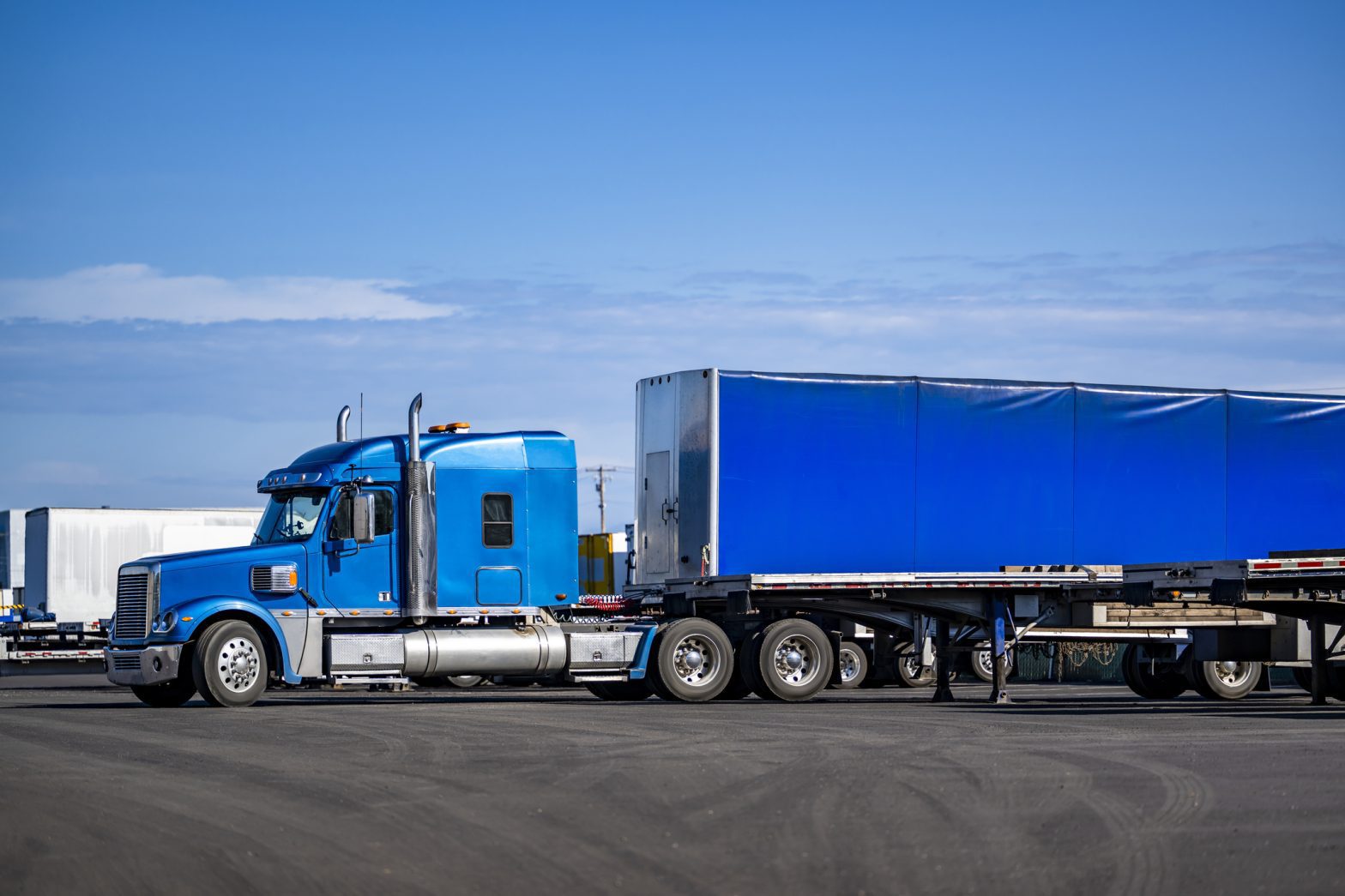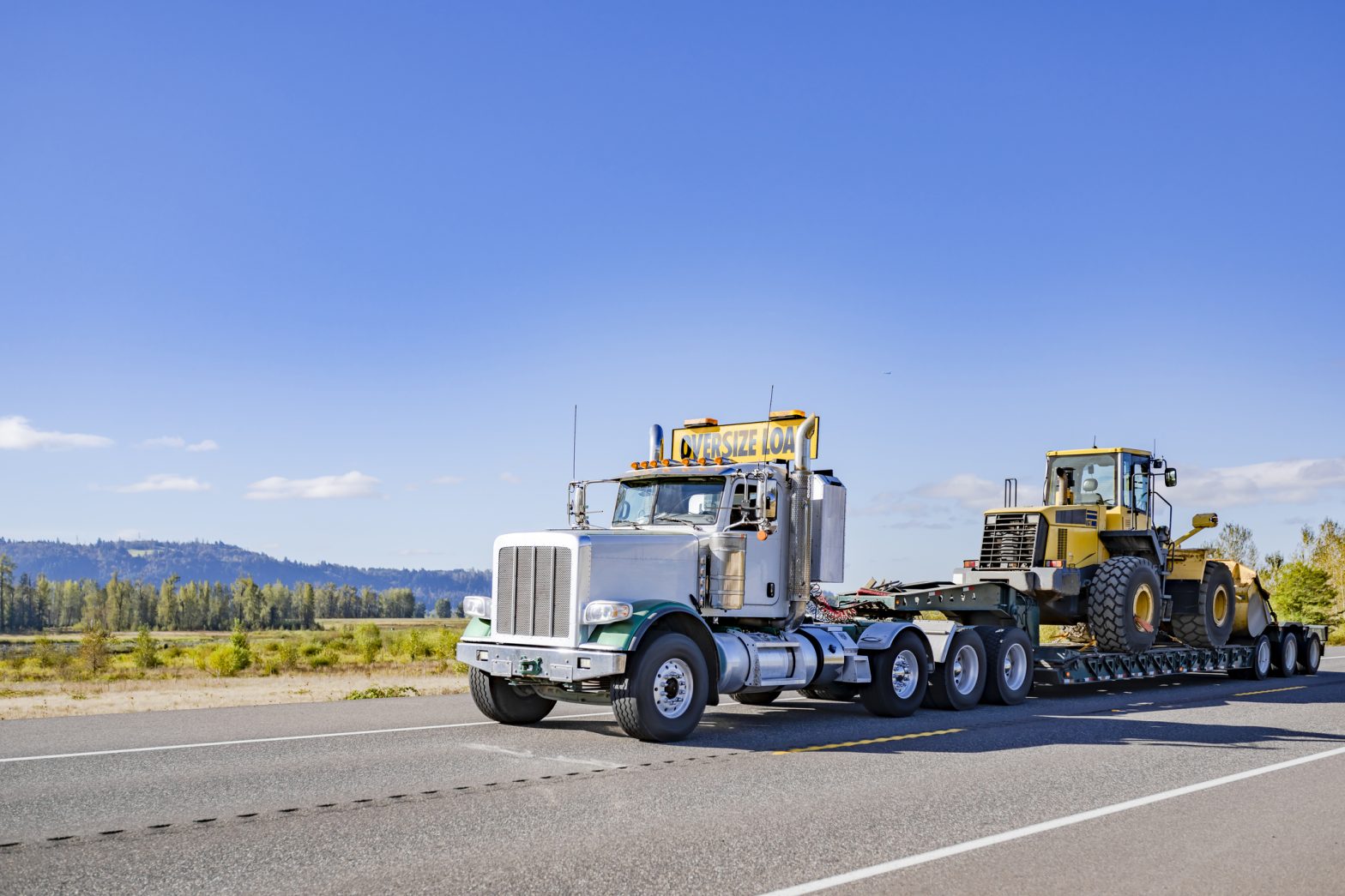
 juin 26, 2024
juin 26, 2024
Proven Strategies for Safe Cross-Border Heavy Machinery Transportation
Transporting heavy machinery is a complex process that requires diligent planning, specialized equipment, and expert coordination. Whether you’re moving machinery, molds, tool and dies, or oversized cargo, successfully navigating this process requires careful consideration of various factors. From choosing the appropriate trailer type to obtaining permits and adhering to cross-border regulations, every aspect plays a crucial role in ensuring a smooth and successful transportation operation.
Planning the Heavy Machinery Transit Process
Transporting heavy machinery cross-border demands meticulous planning due to various logistical, legal, and safety considerations.
- Regulations: Understanding regulatory requirements is critical; different countries may have distinct rules regarding permits, weight limits, and documentation. Proper planning allows for obtaining necessary permits, escorts and ensuring compliance with regulations, averting potential fines or delays at the border.
- Route Selection: Permit restrictions may apply given the weight or size of a load, and the truck may be restricted from driving on certain roads or during certain hours. Additionally, during certain months some roads have frost laws restricting heavy freight transportation, regardless of annual permits. Having a precise route prepared in advance that accounts for road restrictions allows for a timely transportation process.
- Logistical challenges: Road conditions and transport equipment availability necessitate detailed planning to mitigate risks and ensure the safe and prompt delivery of machinery. Coordinating with riggers in advance is essential for aligning the loading and unloading schedules and preventing wasted time and additional rigger fees.
- Communication: Meticulous planning enables coordination between all involved parties, including transport companies, riggers, customs officials, and project managers, facilitating efficient communication and problem-solving throughout the transportation process to save both time and costs.
Ultimately, comprehensive planning not only enhances operational efficiency but also safeguards against potential disruptions, ensuring the successful transportation of heavy machinery across borders.

Choosing the Right Trailer for Secure Cargo Transport
Choosing the appropriate equipment for transporting the load is essential to ensure safety and efficiency throughout the journey. Flatbed trailers, lowboy trailers, and specialized heavy-haul trailers are among the most commonly used options, each offering unique advantages depending on the size and weight of the cargo.
- Flatbed trailers: provide a versatile solution for transporting machinery that can be loaded and unloaded from all sides of the truck including the top, back, side, or front. These trucks are ideal for smaller equipment or over-dimensional loads since there are no trailer walls which allows for quick and easy access.
- Lowboy trailers: are specifically designed to transport oversized and heavy machinery. With their low deck height and removable gooseneck, lowboy trailers can accommodate tall and bulky equipment while providing stability and support during transit.
- Specialized heavy-haul trailers: are tailored to handle exceptionally large and heavy loads, such as industrial machinery and construction equipment. These trailers often feature multiple axles and hydraulic systems to distribute weight evenly and ensure safe transportation.
When it comes to protecting cargo from external elements during transit, proper tarping is essential. Different tarping methods may be employed depending on the type of machinery being transported and the prevailing weather conditions.
Why Riggers Are Essential for Secure Machinery Transportation
Riggers play a pivotal role in the transportation of heavy machinery, ensuring that equipment is properly packaged, loaded, and unloaded throughout the process. These skilled professionals are trained to safely handle oversized and heavy loads, minimizing the risk of damage or accidents during transit.
Riggers work closely with truck drivers and logistics coordinators to determine the most suitable loading and unloading methods for each piece of machinery. From selecting the appropriate rigging equipment to securing the cargo with chains, straps, and shackles, riggers employ precision and expertise to ensure that equipment is transported securely.
Additionally, riggers may be called upon to dismantle and reassemble machinery as needed to facilitate transportation. This may involve disassembling large components, such as booms, buckets, or tracks, and reassembling them at the destination site to ensure safe and efficient handling.
Transporting overweight freight across borders:
Transporting overweight freight across international borders presents unique challenges and requires careful adherence to regulatory requirements and permitting procedures. When moving heavy machinery from Canada to the USA and from the USA to Mexico, it is essential to obtain the necessary permits and comply with the weight restrictions imposed by each jurisdiction.
Moving within Canada or the USA: In Canada, overweight permits are typically issued by provincial or territorial authorities, allowing carriers to transport loads that exceed standard weight limits on designated routes. Similarly, in the USA, overweight permits are issued by state departments of transportation, with specific regulations varying depending on the state and the type of roadway being used.
From Canada to the USA: When crossing the border from Canada to the USA, carriers must ensure compliance with US Customs and Border Protection regulations, including providing accurate documentation and adhering to entry requirements. This may involve obtaining a customs bond, submitting a manifest of goods, and undergoing inspection by border officials.
From the USA to Mexico: Similarly, carriers must navigate Mexican customs procedures when transporting heavy machinery from the USA to Mexico, and obtain the necessary permits for entry into the country. This may include securing a temporary importation permit (TIP) for the equipment, providing documentation of ownership, and paying any applicable duties or taxes.
Obtaining permits for overweight loads requires careful planning and coordination to ensure compliance with regulatory requirements and avoid potential fines or penalties. In addition to obtaining permits for specific jurisdictions, carriers must also consider weight restrictions imposed by bridges, overpasses, and other infrastructure along the transportation route.

Using escorts for oversized or overweight freight
When transporting oversized or overweight freight, escort services play a critical role in ensuring the safety of the transportation operation. Escorts, typically consisting of either police vehicles or pilot cars equipped with flashing lights and signage, accompany oversized vehicles to provide advance warning to other motorists and assist with navigation through challenging terrain or congested roadways.
In addition to providing a visible warning to other drivers, escorts communicate with the driver of the oversized vehicle to relay information about upcoming obstacles, such as low bridges, tight turns, or construction zones. By coordinating closely with the driver and logistics team, escorts help mitigate the risk of accidents and ensure the smooth flow of traffic throughout the journey.
Coordination is key
Communication and coordination are crucial when transporting overweight machinery, as the process involves numerous stakeholders and complex logistics. Effective communication ensures that all parties involved, including drivers, riggers, escorts, and logistics coordinators, are on the same page regarding the transportation plan, route details, permit restrictions, and safety protocols.
Clear communication helps to prevent risks and address any challenges that may arise during transit, such as road closures, weather delays, or unforeseen obstacles. Additionally, coordination among team members ensures that each aspect of the transportation process is executed seamlessly, from loading and securing the machinery to navigating through challenging terrain and crossing international borders.
By maintaining open lines of communication and fostering strong coordination among all stakeholders, carriers can ensure the safe and efficient transportation of overweight machinery while minimizing the risk of accidents, delays, and costly disruptions.
Streamlining your business
Transporting heavy machinery requires careful planning, specialized equipment, and expert coordination to ensure safe and efficient transportation. By working with the right partner you won’t have to worry about managing all the complexities of transporting heavy machinery. At First Frontier Logistics we have ample experience transporting regular, overweight, and oversized freight across North America. Contact us to learn how we can help you manage your transportation needs.







